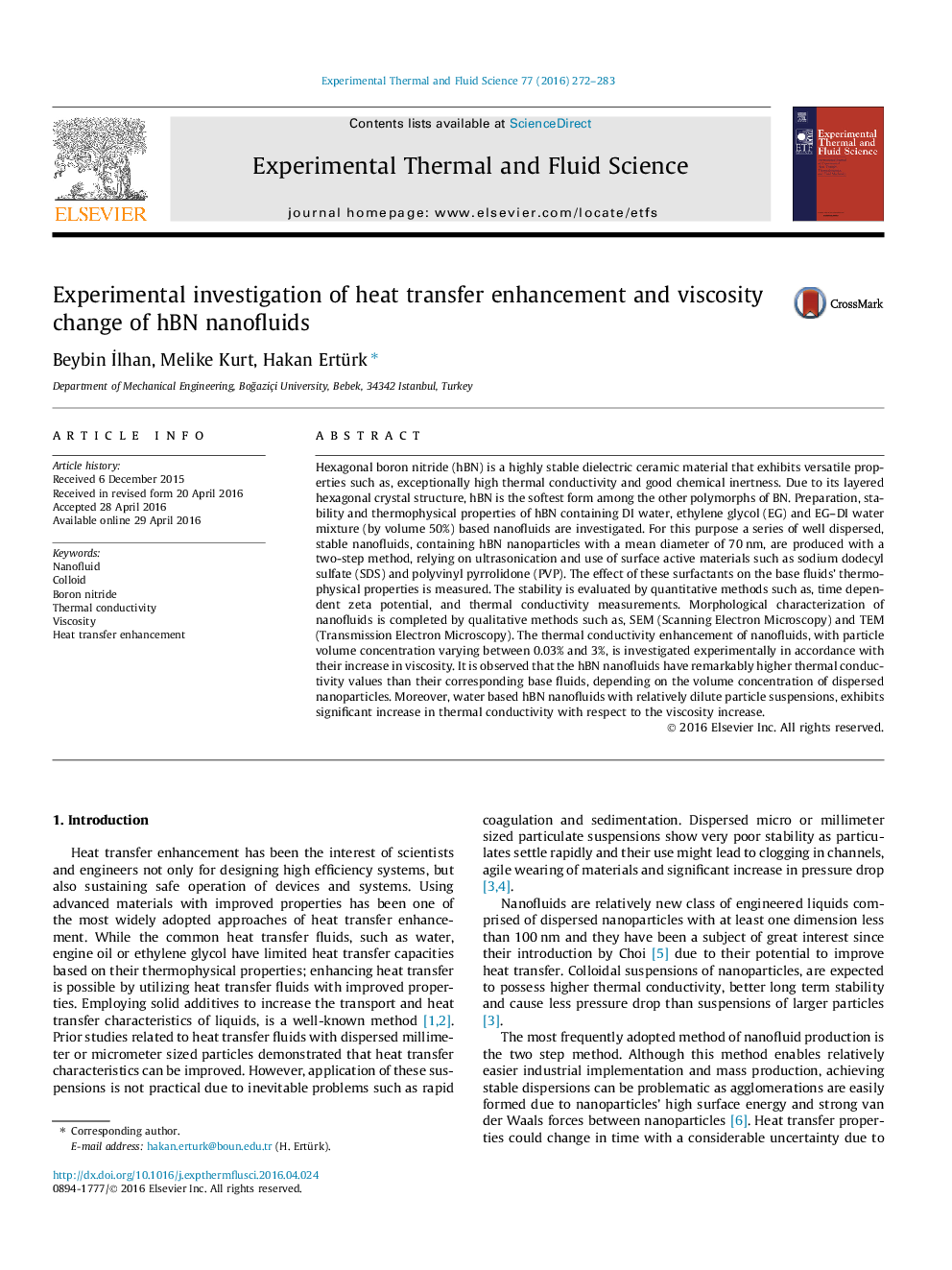| کد مقاله | کد نشریه | سال انتشار | مقاله انگلیسی | نسخه تمام متن |
|---|---|---|---|---|
| 651050 | 1457399 | 2016 | 12 صفحه PDF | دانلود رایگان |

• Heat transfer enhancement and viscosity increase of hBN nanofluids experimentally investigated.
• Nanofluids investigated are comprised of hBN nanoparticles and water, EG and water/EG mixture as base fluid.
• Preparation recipe uses two step method with ultrasonication and PVP as surfactant addition.
• hBN–water nanofluid shows significant thermal conductivity increase even for very dilute particle concentrations.
• Percolation through the local particle clusters is the effective mechanism responsible from the observed increase.
Hexagonal boron nitride (hBN) is a highly stable dielectric ceramic material that exhibits versatile properties such as, exceptionally high thermal conductivity and good chemical inertness. Due to its layered hexagonal crystal structure, hBN is the softest form among the other polymorphs of BN. Preparation, stability and thermophysical properties of hBN containing DI water, ethylene glycol (EG) and EG–DI water mixture (by volume 50%) based nanofluids are investigated. For this purpose a series of well dispersed, stable nanofluids, containing hBN nanoparticles with a mean diameter of 70 nm, are produced with a two-step method, relying on ultrasonication and use of surface active materials such as sodium dodecyl sulfate (SDS) and polyvinyl pyrrolidone (PVP). The effect of these surfactants on the base fluids’ thermophysical properties is measured. The stability is evaluated by quantitative methods such as, time dependent zeta potential, and thermal conductivity measurements. Morphological characterization of nanofluids is completed by qualitative methods such as, SEM (Scanning Electron Microscopy) and TEM (Transmission Electron Microscopy). The thermal conductivity enhancement of nanofluids, with particle volume concentration varying between 0.03% and 3%, is investigated experimentally in accordance with their increase in viscosity. It is observed that the hBN nanofluids have remarkably higher thermal conductivity values than their corresponding base fluids, depending on the volume concentration of dispersed nanoparticles. Moreover, water based hBN nanofluids with relatively dilute particle suspensions, exhibits significant increase in thermal conductivity with respect to the viscosity increase.
Journal: Experimental Thermal and Fluid Science - Volume 77, October 2016, Pages 272–283